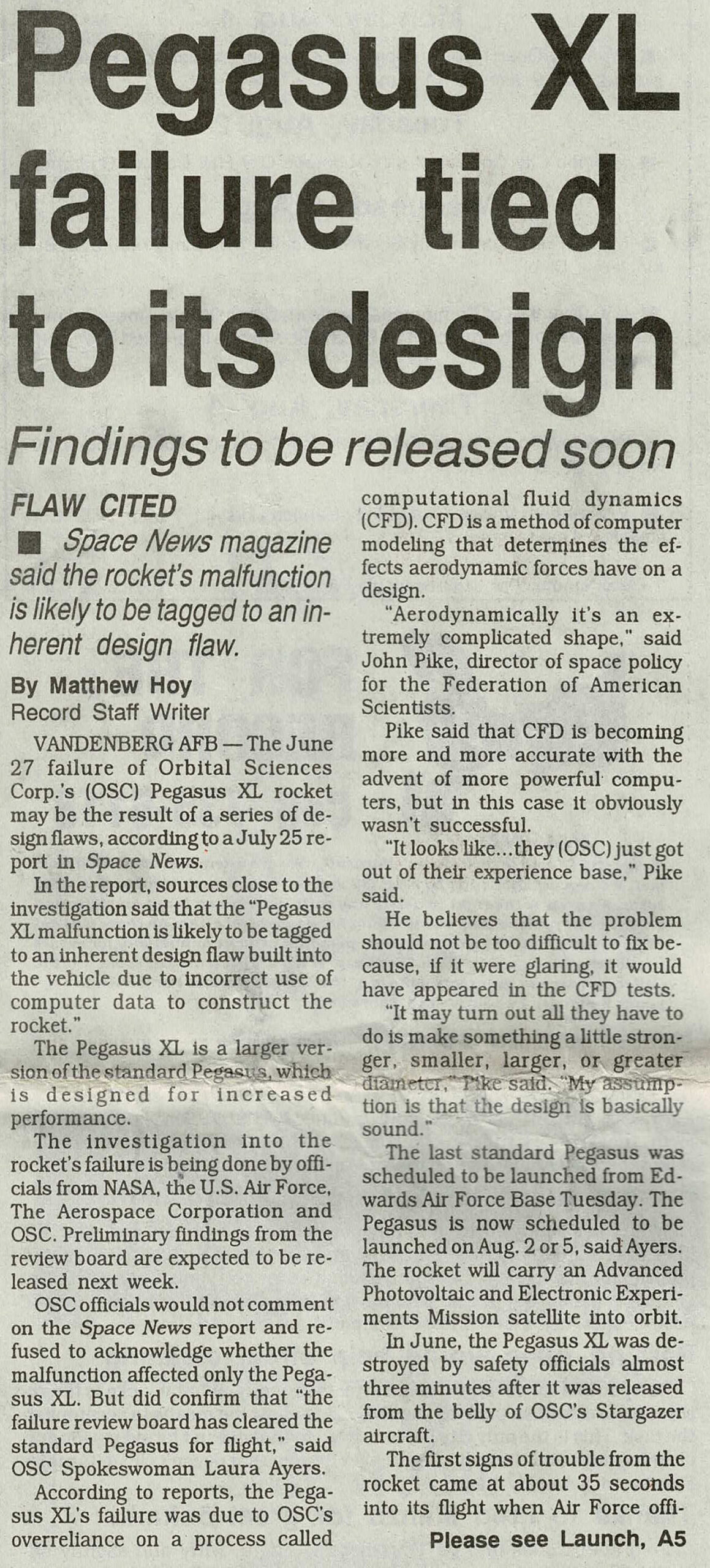FLAW CITED
By Matthew Hoy
Record Staff Writer
VANDENBERG AFB—The June 27 failure of Orbital Sciences Corp.'s (OSC) Pegasus XL rocket may be the result of a series of design flaws, according to a July 25 report in Space News.
In the report, sources close to the investigation said that the "Pegasus XL malfunction is likely to be tagged to an inherent design flaw built into the vehicle due to incorrect use of computer data to construct the rocket."
The Pegasus XL is a larger version of the standard Pegasus which is designed for increased performance.
The investigation into the rocket's failure is being done by officials from NASA, the U.S. Air Force, The Aerospace Corporation and OSC. Prel1minary findings from the review board are expected to be released next week.
OSC officials would not comment on the Space News report and refused to acknowledge whether the malfunction affected only the Pegasus XL. But did confirm that "the failure review board has cleared the standard Pegasus for flight," said OSC Spokeswoman Laura Ayers.
According to reports, the Pegasus XL's failure was due to OSC's overreliance on a process called computational fluid dynamics (CFD). CFD is a method of computer modeling that determines the effects aerodynamic forces have on a design.
"Aerodynamically it's an extremely complicated shape," said John Pike, director of space policy for the Federation of American Scientists.
Pike said that CFD is becoming more and more accurate with the advent of more powerful computers, but in this case it obviously wasn't successful.
"It looks like ... they (OSC) just got out of their experience base," Pike said.
He believes that the problem should not be too difficult to fix because, if it were glaring, it would have appeared in the CFD tests.
"It may turn out all they have to do is make something a little stronger, smaller, larger, or greater diameter," Pike said. "My assumption is that the design is basically sound."
The last standard Pegasus was scheduled to be launched from Edwards Air Force Base Tuesday. The Pegasus is now scheduled to be launched on Aug. 2 or 5, said Ayers. The rocket will carry an Advanced Photovoltaic and Electronic Experiments Mission satellite into orbit.
In June, the Pegasus XL was destroyed by safety officials almost three minutes after it was released from the belly of OSC's Stargazer aircraft.
The first signs of trouble from the rocket came at about 35 seconds into its flight when Air Force officials lost telemetry on the Pegasus.
Destroyed along with the rocket was a TRW-built Small Test Experiments Platform that was to test the effects of the ionosphere on radio communications.
Published Thursday, July 29, 1994, The Lompoc Record.
